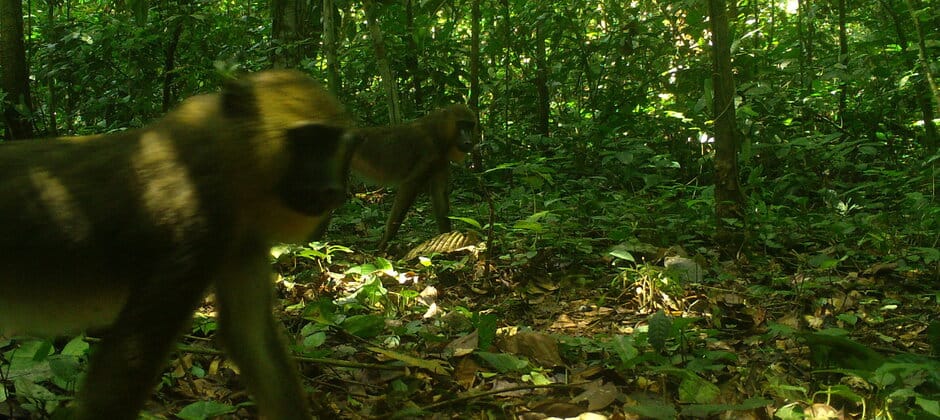Share this article
Wild Cam: Exploring the mammals of Equatorial Guinea
When most people think of mammals in Central Africa, the first thing that comes to mind are the massive charismatic species like elephants, giraffes, lions or hippos.
But many wild parts of the region contain a number of smaller mammal species that don’t often get as much attention from conservationists and wildlife managers, despite the perils some of them face.
Enlarge
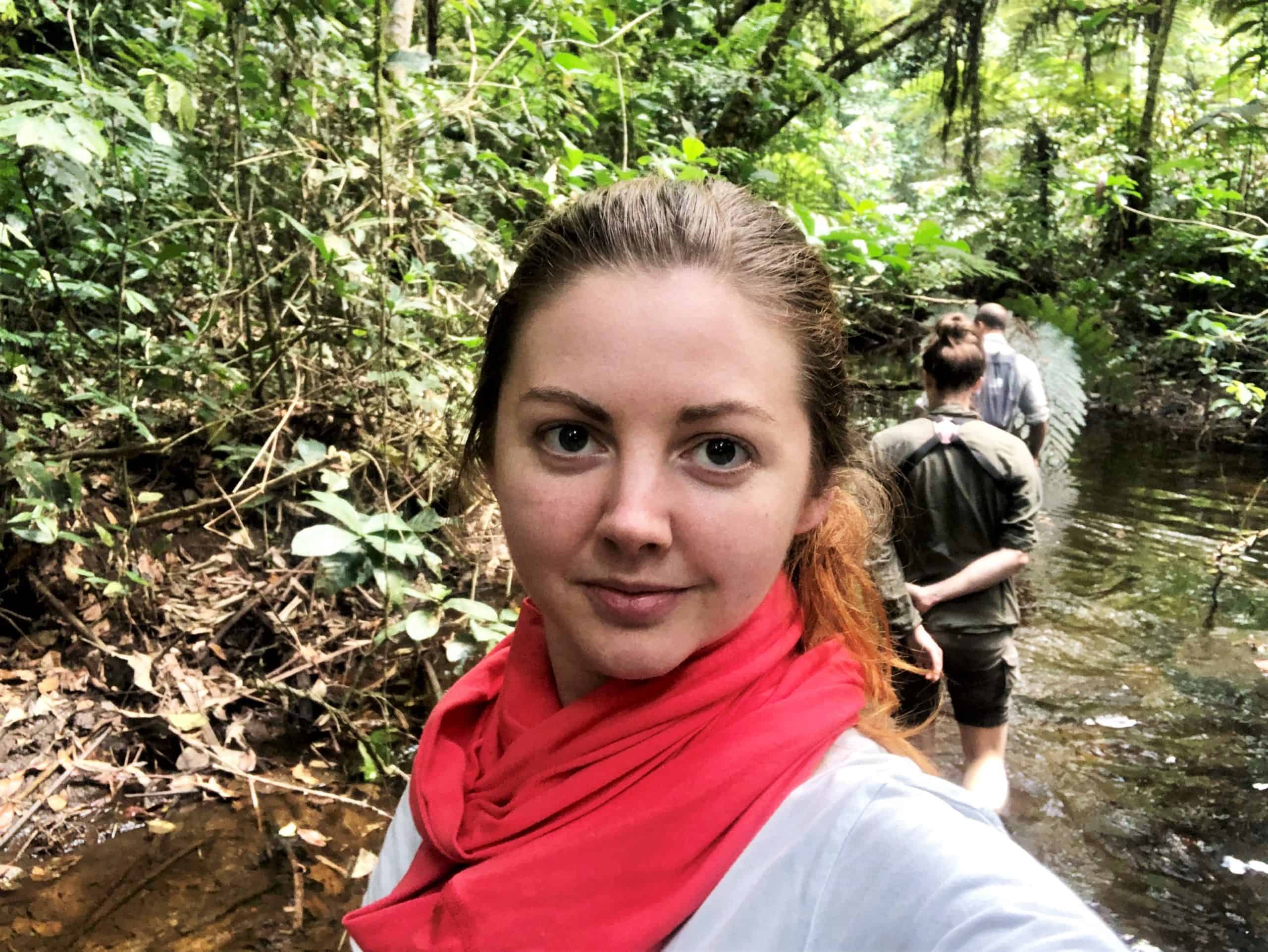
Credit: Tiff DeGroot
Researchers are trying to remedy that lack of knowledge in parts of Equatorial Guinea by conducting baseline surveys using trail cameras to understand what species live where. In ongoing research presented at The Wildlife Society’s virtual 2021 Annual Conference, PhD student Tiff DeGroot at the Michigan Technical University, pictured above, described how she and her colleagues are learning about the mammal diversity in Rio Campo Natural Reserve in the northwestern corner of the country.
Enlarge
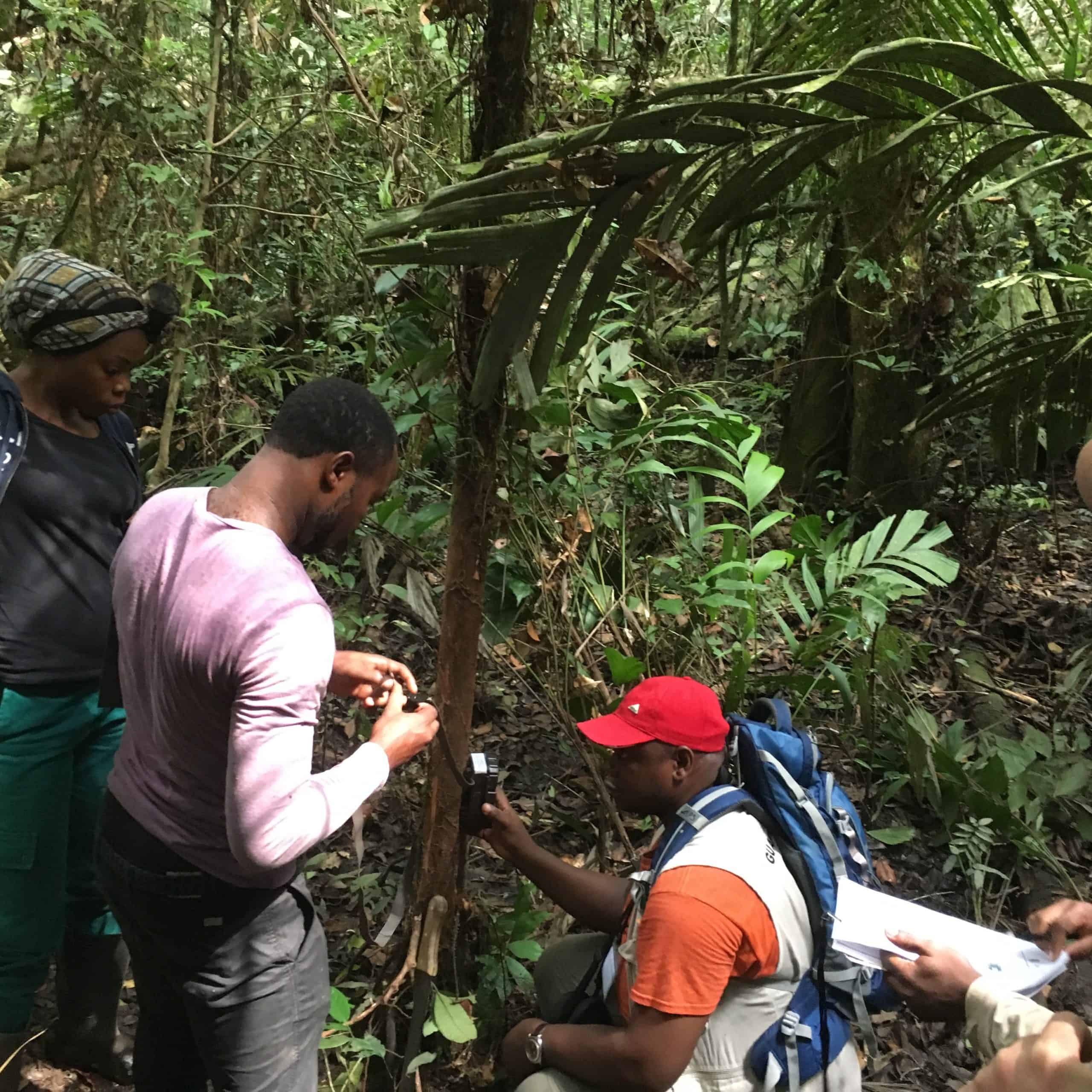
Credit: Biodiversity Initiative
Working in collaboration with Equatorial Guinea’s National Institute of Forestry Development and Protected Areas Management, the team detected at least 32 species of mammals in Rio Campo on camera. But there could be a few more medium to large mammals that just weren’t captured in photos, or that couldn’t be identified from the photos. For example, they didn’t detect any leopards, even though there had been sightings in the 1990s. They also expected to see forest buffalo (Syncerus caffer nanus), but detected none. There were reports of some buffalo living in the area, but the last one was in 2001.
“We’ve likely detected a representative majority of what exists in Rio Campo,” DeGroot said, though she added that the camera traps were optimally placed to capture photos of terrestrial mammals—tree-living species like primates may not be as well-represented in this survey.
Nonetheless, the researchers did capture photos of some semi-arboreal species like monkeys and pangolins that sometimes descended from the canopy. While their focus was on medium to large mammals, the researchers also captured a number of photos of rodent species and a few blurred shots of bats, nut they were unable to pinpoint what species these were.
Enlarge
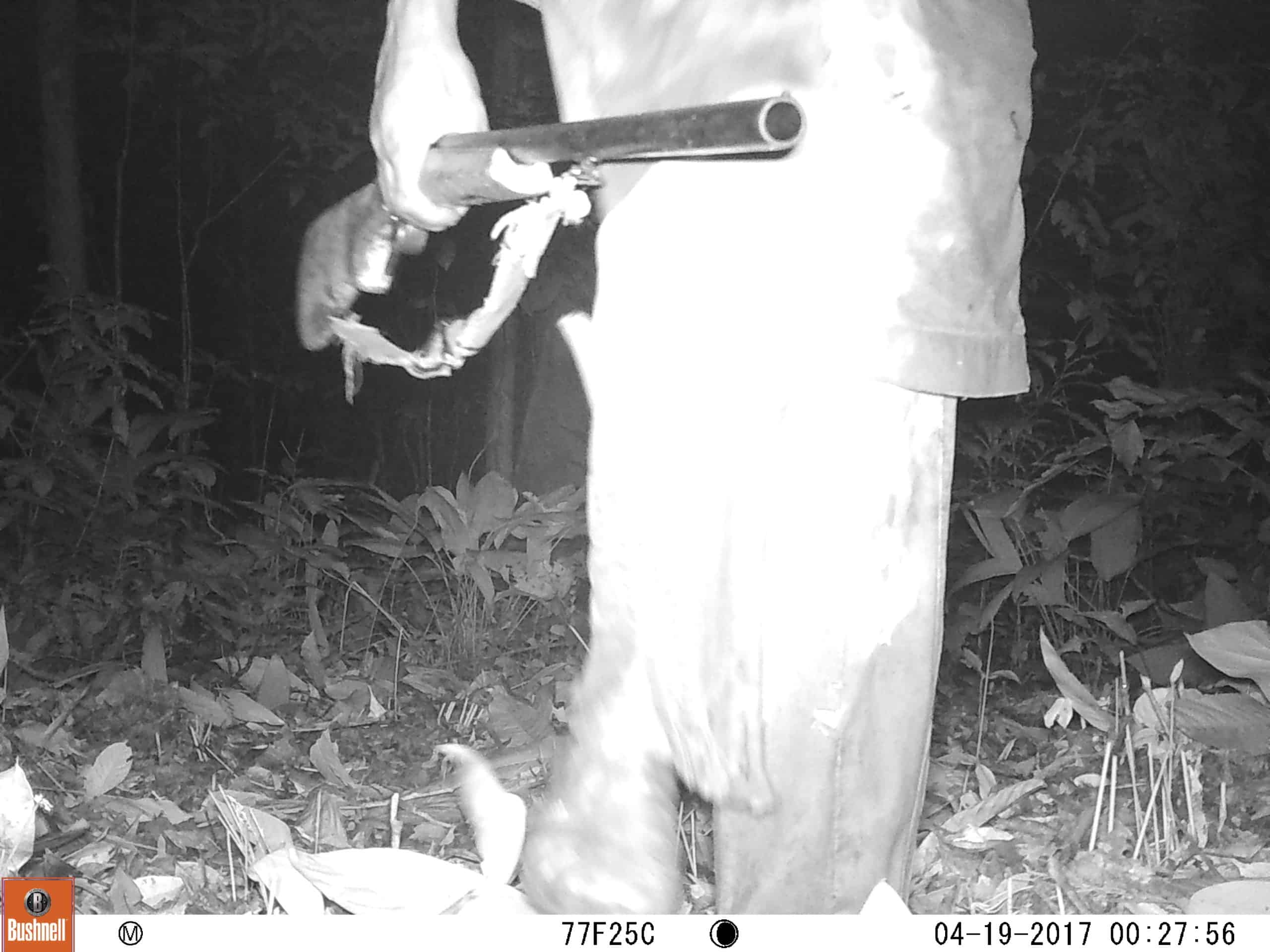
Credit: Biodiversity Initiative
The researchers are examining how the park’s borders may affect some species’ abundance. The western end of the park borders the ocean, while the northeastern side of the park lies along the border of Cameroon. A major highway to Bata, the country’s largest mainland city, cuts through the park, which may open access to hunters.
Enlarge
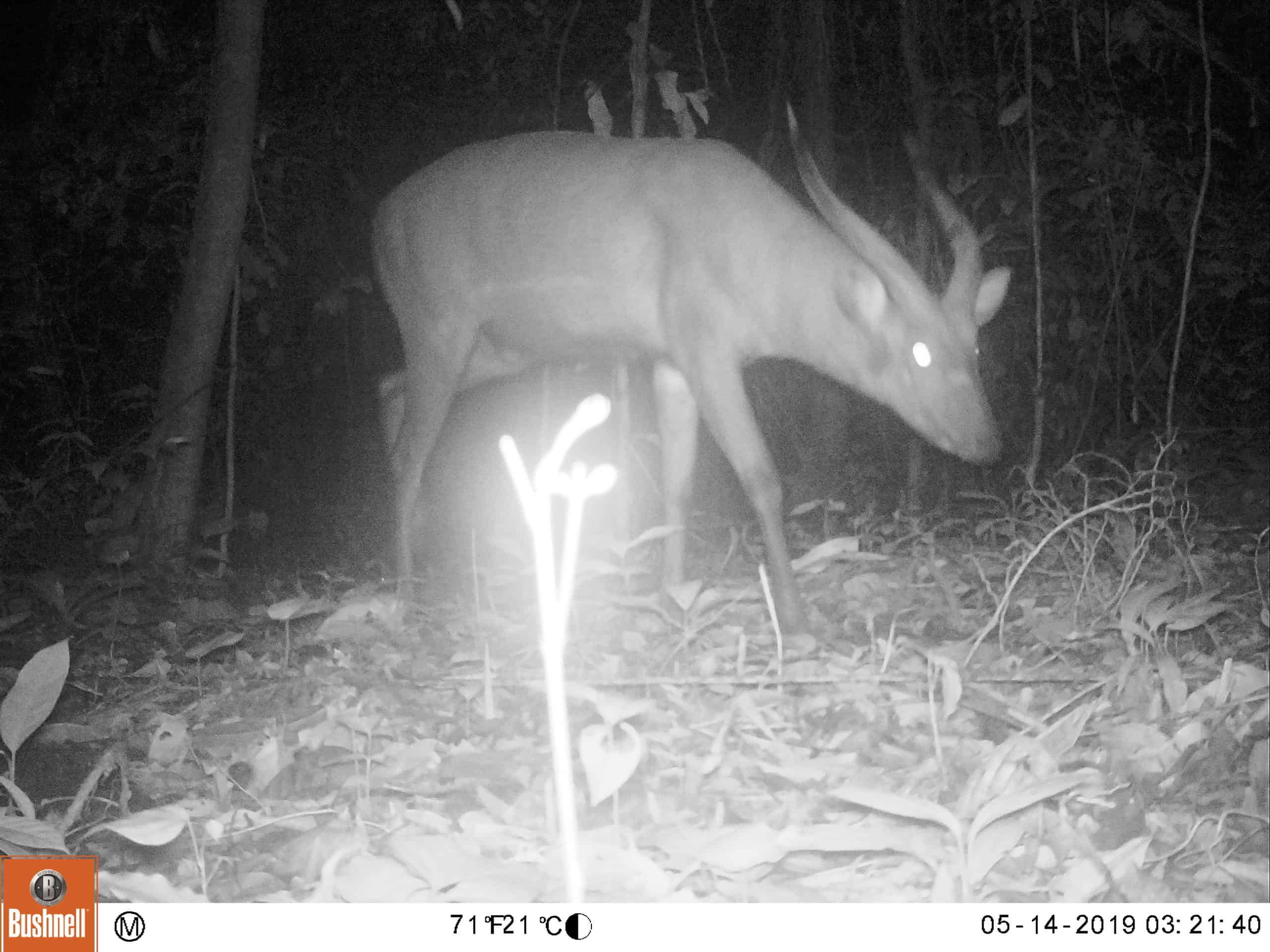
Credit: Biodiversity Initiative
Proximity to roads and villages may have also affected abundance and diversity in some cases. It certainly affected the research—wildlife managers reported some cameras stolen, DeGroot said.
Some large duiker species like sitatunga (Tragelaphus spekii) and bushbuck (Tragelaphus scriptus) were found more often around roads.
While Rio Campo abuts an international border, it connects with the Campo Ma’an National Park in Cameroon, which likely provides some habitat connectivity for some species. DeGroot said that initial analysis shows that forest elephants (Loxodonta cyclotis), chimpanzees (Pan troglodytes), giant pangolins (Smutsia gigantea) and western lowland gorillas (Gorilla gorilla gorilla), may be more abundant in the part of Rio Campo that borders Cameroon.
Enlarge
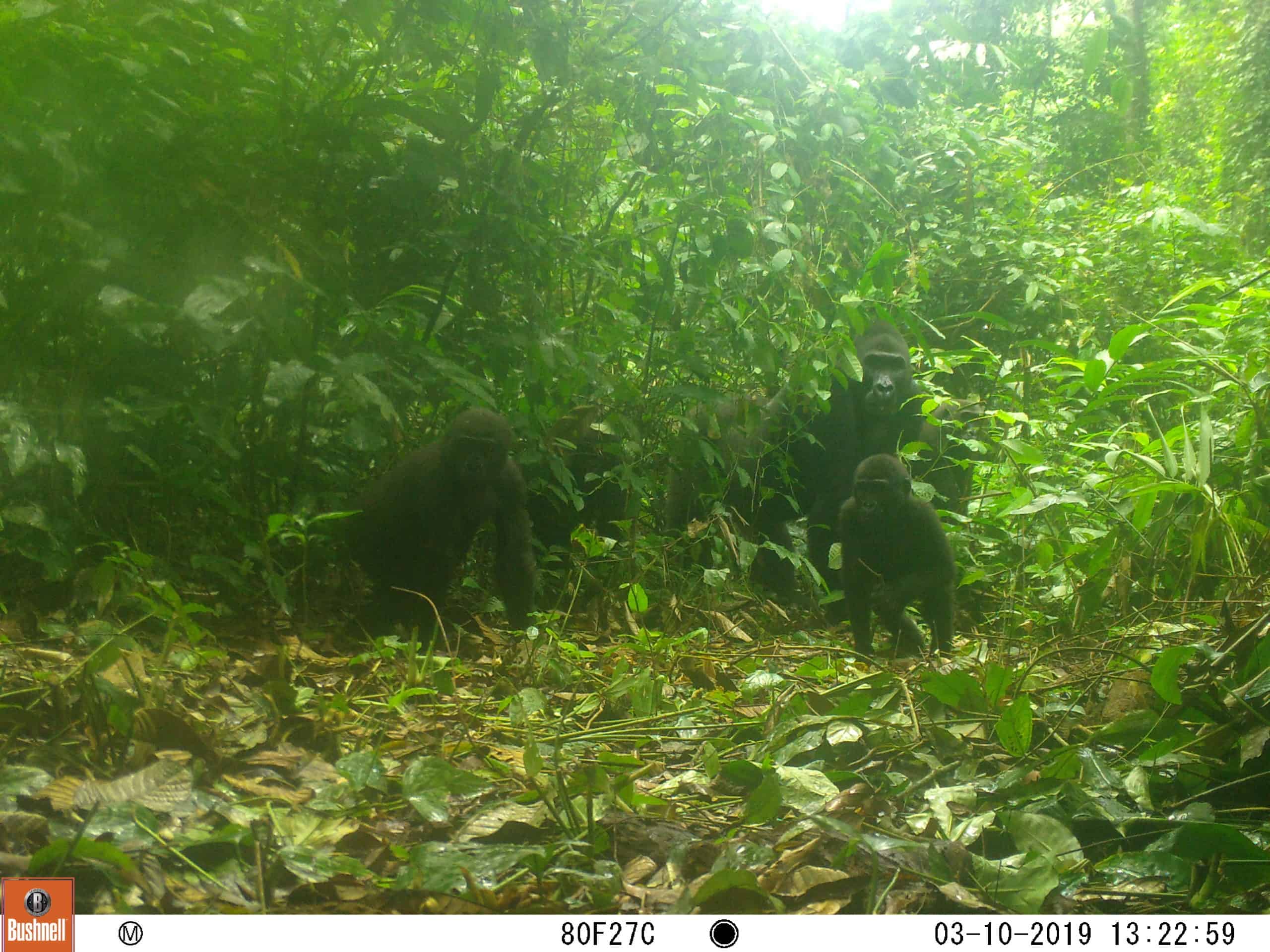
Credit: Biodiversity Initiative
DeGroot said that the abundance of these animals near Cameroon might reflect different management regimes in the two countries as well, including funding. But further studies would be needed to confirm this.
Enlarge
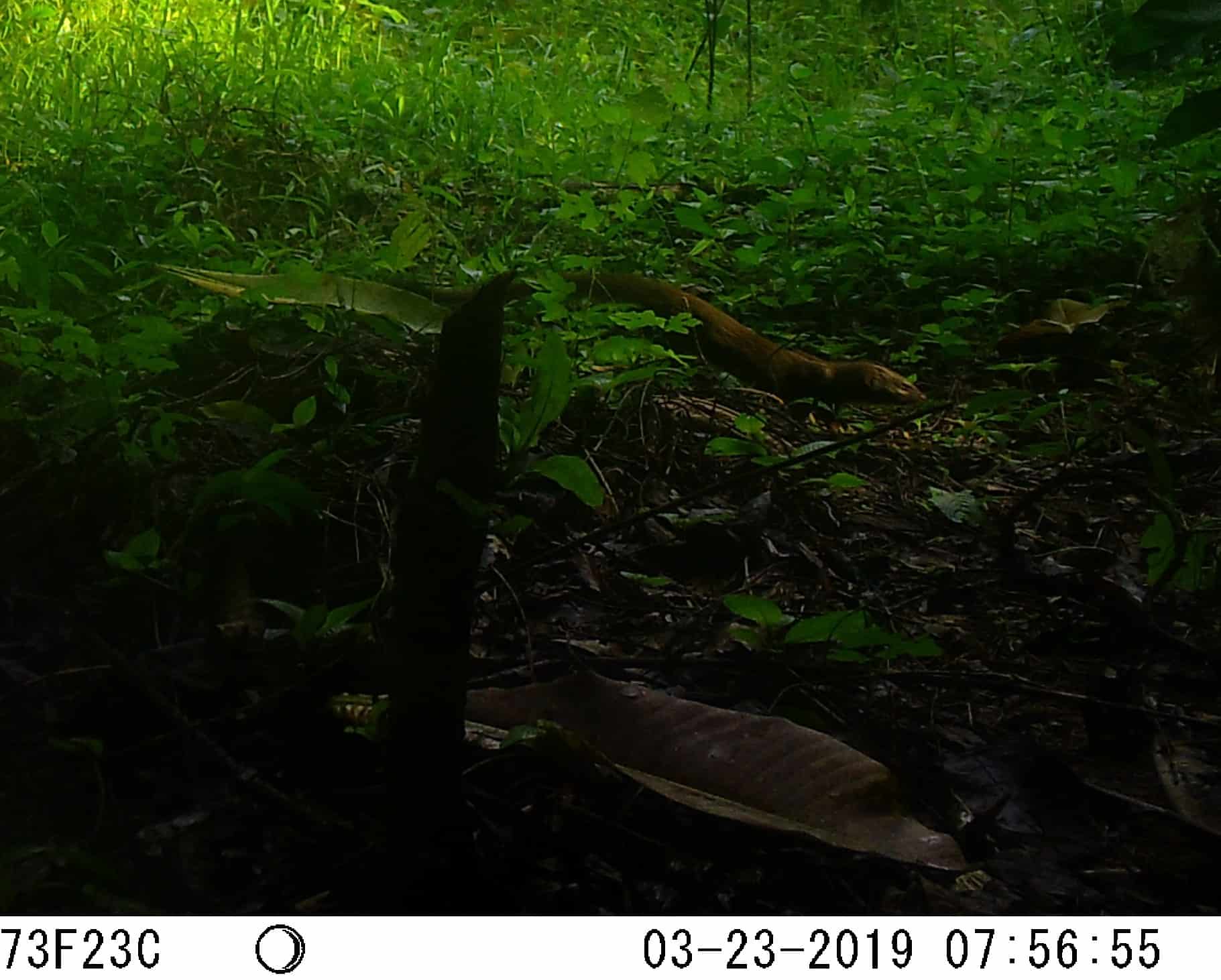
Credit: Biodiversity Initiative
The trail cameras also captured photos of species that were previously unmentioned in scientific surveys in this region of Equatorial Guinea—the slender mongoose (Herpestes sanguineus) and the marsh mongoose (Atilax paludinosus).
In general, the researchers found that two threatened taxonomic groups in the area—monkeys and pangolins—were typically found deeper inside the reserve than in areas around the border. DeGroot said this finding suggests protection offered by the reserve is working to a degree, though additional study outside Rio Campo would be needed to confirm this.
In the future, she hopes researchers can compare these wildlife surveys at Rio Campo with mammal surveys conducted elsewhere in the country. Equatorial Guinea has a good network of protected areas—about 20% of the country’s uplands are protected, she said. She hopes that future research can help inform conservationists about what areas to focus on in order to protect certain species.
Header Image: Mandrills move through the forest in Rio Campo. Credit: Biodiversity Initiative



